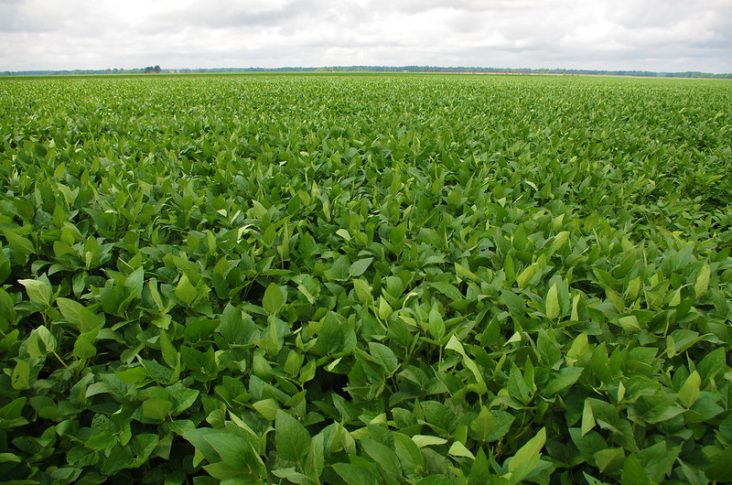Soybean farmers enjoy a rebound year despite record rainfall in June
by January 19, 2022 4:05 pm 790 views

Photo courtesy of Arkansas Farm Bureau.
Arkansas soybean farmers were set for a solid return year in 2021 after years of battling low prices, bad weather and problems connected with the COVID-19 pandemic. Jeremy Ross, extension soybean agronomist for the University of Arkansas System Division of Agriculture, said that overall the soybean harvest was good, but a torrential rain storm during the late Spring cost farmers millions more in potential profits.
“We had a good year,” Ross said. “But we could’ve had a really good year.”
A record rainfall and flooding event that struck Southeast Arkansas during the first week of June impacted 600,000 acres of corn, cotton, rice and soybeans. Ross and other experts estimated a loss of about $70 million in soybean production alone.
And while many growers replanted in soybeans, they knew they were likely to see significant yield reduction in those acres given the late date relative to the planting and growing seasons.
“Talking to growers that had to do replanting in that area, they’re pleased with what they got,” Ross said. “But of course the yields aren’t as high as they could’ve been had that flooding event not occurred, had they not needed to replant. Some of those growers lost one to two months’ worth of progress when that flood came in June.”
State soybean growers managed an estimated average yield of 50 bushels per acre, in line with averages from the last several years, according to preliminary figures from the U.S. Department of Agriculture. Total soybean acreage was just over 3 million acres.
Even before the June flood, planting was an on-again, off-again affair throughout the spring as intermittent rainfall limited good planting days to just a few a week, Ross said.
“We fell into a pattern in which it would rain Sunday, Monday, maybe Tuesday, so nobody could do anything during the week. So maybe they’d get back in the field Friday or Saturday. And it seemed like that was the pattern for several weeks. That hurt us, for example, trying to get research plots planted,” Ross said.
After the June flood, soybeans then faced drought conditions and tended to be neglected as growers prioritized irrigating corn, cotton and rice, all of which were in more critical growth stages than soybeans in July and August.
The crop was not as badly injured by the widespread fall armyworm outbreak as other crops because there are more effective modes of action to control the pest in soybeans. The last hurdle for the crop was the abnormally warm weather throughout October, which led to green stem and other quality issues going into harvest for some fields.
“But with the fairly dry weather we had at the end of harvest, I think most everyone is done,” Ross said. “It’s been several weeks since I’ve seen any unharvested fields. I think most everyone’s done, and I think people are ready to put this year behind them.”
Market prices for soybeans, which had long dwelled well below $10 a bushel, soared above $12 in 2021, making the commodity more profitable than it had been in several years. But 2022 may challenge that profitability, even if commodity trading remains high.
“Costs are going to be elevated in 2022,” Ross said. “Fertilizer and fuel costs will be up, pesticides are in short supply, so the prices will go up. And labor is still an issue.
“We’re already looking at the 2022 budgets,” he said. “If you look at just fertilizer and fuel costs on the soybean budget, we’ve got a $71 an acre increase compared to the 2021 budget. That’s not including labor, pesticides, etc. So even if you’re getting $12 a bushel, you’re looking at several bushels an acre going just toward paying that additional cost.”
